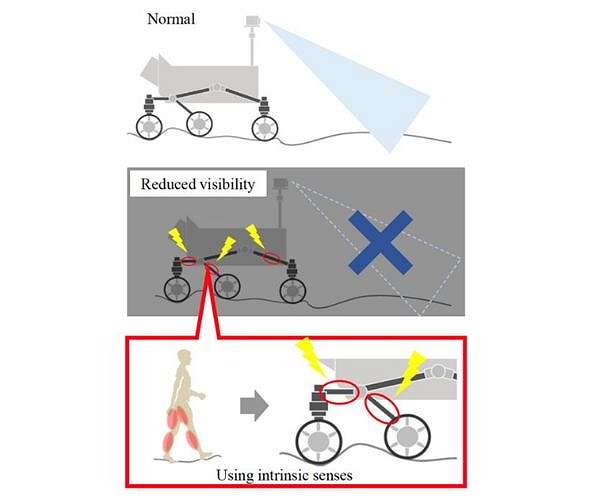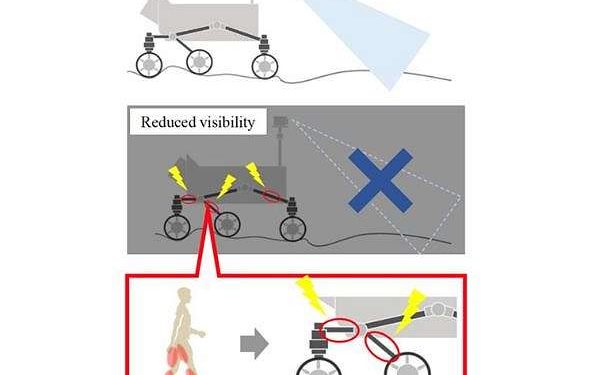
System mimics human muscles to prevent slippage on robotic rovers
by Riko Seibo
Tokyo, Japan (SPX) Nov 16, 2023
In an era where planetary exploration increasingly relies on unmanned rovers, ensuring their safe and effective navigation across challenging extraterrestrial terrains is paramount. This is especially true in environments like Mars or the Moon, where surfaces are often covered with regolith-a fine, loose material that can significantly impair rover mobility. Addressing this challenge, researchers from Japan’s Shibaura Institute of Technology (SIT) have introduced a groundbreaking system designed to enhance rover stability and prevent slippage in such demanding conditions.
Professor Kojiro Iizuka and Dr. Kohei Inaba, from SIT’s Department of Machinery and Control Systems of the College of Systems Engineering and Science, have drawn from biological principles to develop this novel system. “Our inspiration came from how humans detect their own traveling state based on muscle tension while walking. We aimed to develop a similar system that recognizes the traveling state based on the chassis shape deformation,” Prof. Iizuka elucidates.
The traditional methods of slip detection in rovers, which heavily rely on visual data, often fall short in differentiating between varied terrain features. This limitation can result in the inability to distinguish rocks from loose sand, thus posing a risk to the rover’s mission. To overcome this, the SIT research team focused on mimicking the way human muscles-specifically nuclear chain fibers and nuclear bag fibers-work in detecting body movement and posture.
The novel system introduced by SIT categorizes the changes in the shape of a rover’s chassis, manifested as strain, into two types: displacement of strain and vibrational change in strain. By analyzing the strain displacement through a method akin to nuclear chain fibers analysis, and the strain velocity resembling nuclear bag fibers analysis, the system can effectively determine the rover’s traveling state.
This method allows for the detection of vertical and motion-directional forces acting on the rover, as changes in strain directly correlate to these forces. “Monitoring strain changes can enable the detection of force alterations, ultimately indicating the rover’s traveling state,” Prof. Iizuka adds. Furthermore, the rate of strain change, analyzed through the nuclear bag fiber analogy, provides valuable data on the level of slippage and necessary adjustments in the rover’s travel state.
In addition to enhancing mobility, the system also boasts the capability to detect environmental obstacles like rocks and stones, further improving the safety and efficiency of rover operations. Prof. Iizuka highlights the broader implications of this research: “During rover route planning, the experiences from this study should be considered to ensure that the rovers can travel safely. These findings represent the first step towards incorporating elements of biological functionality in sensing moving objects. We believe that our approach will also be effective for unmanned aerial vehicles and automatic driving in the future.”
Published in Volume 15, Issue 17 of the journal Remote Sensing on August 30, 2023, this study not only marks a significant step in enhancing the safety and effectiveness of rover missions but also opens new avenues for advancements in various fields of unmanned vehicle technology. As planetary exploration continues to evolve, such innovative approaches will be crucial in unraveling the mysteries of our solar system and beyond.
Research Report:Slip Estimation Using Variation Data of Strain of the Chassis of Lunar Rovers Traveling on Loose Soil
Related Links
Shibaura Institute of Technology
All about the robots on Earth and beyond!
